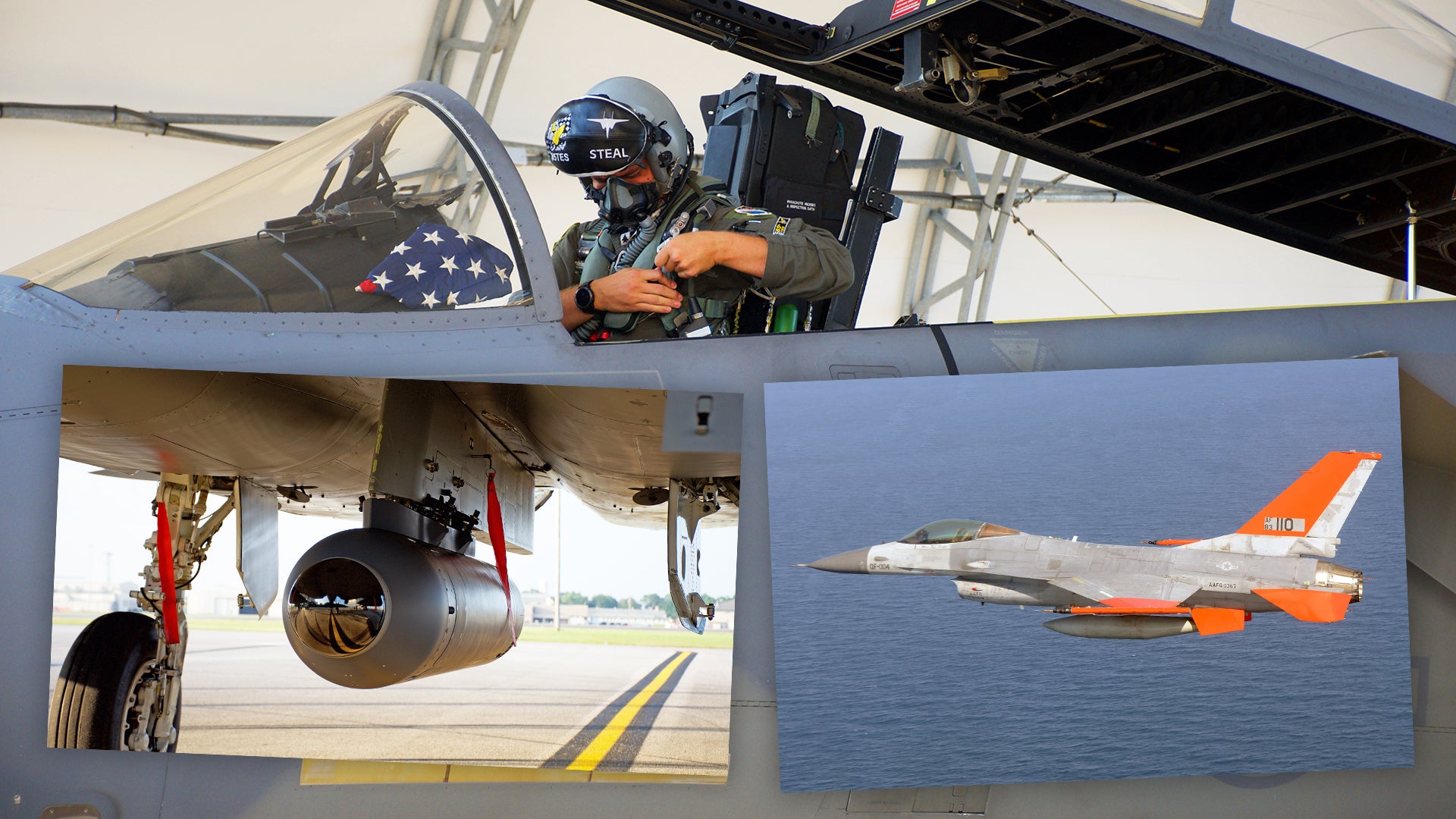The U.S. Air Force’s push to get Infrared Search and Track (IRST) systems to its F-15C/D Eagle cadre, and other jets in the future, hit a huge milestone on August 5, 2021, when an Eagle from Eglin Air Force Base’s 85th Test and Evaluation Squadron shot down a QF-16 Full-Scale Aerial Target (FSAT) with an AIM-120 missile using its IRST for targeting.
The Legion Pod-equipped F-15C has already proven itself in tests when employing the shorter-ranged AIM-9X Sidewinder, but not the AIM-120 AMRAAM, which is the Eagle’s beyond-visual-range weapon.
Major Brian Davis, 85th TES Chief of Air-to-Air Weapons and Tactics, stated the following in an Air Force release:
“This successful live missile test is significant because an F-15 equipped with an IRST-cued AIM-120 allows us to achieve detection, tracking, targeting, weapons employment, and verification of an intercept without being dependent upon RADAR energy… It’s also not susceptible to radiofrequency jamming or a target’s low observable design.”
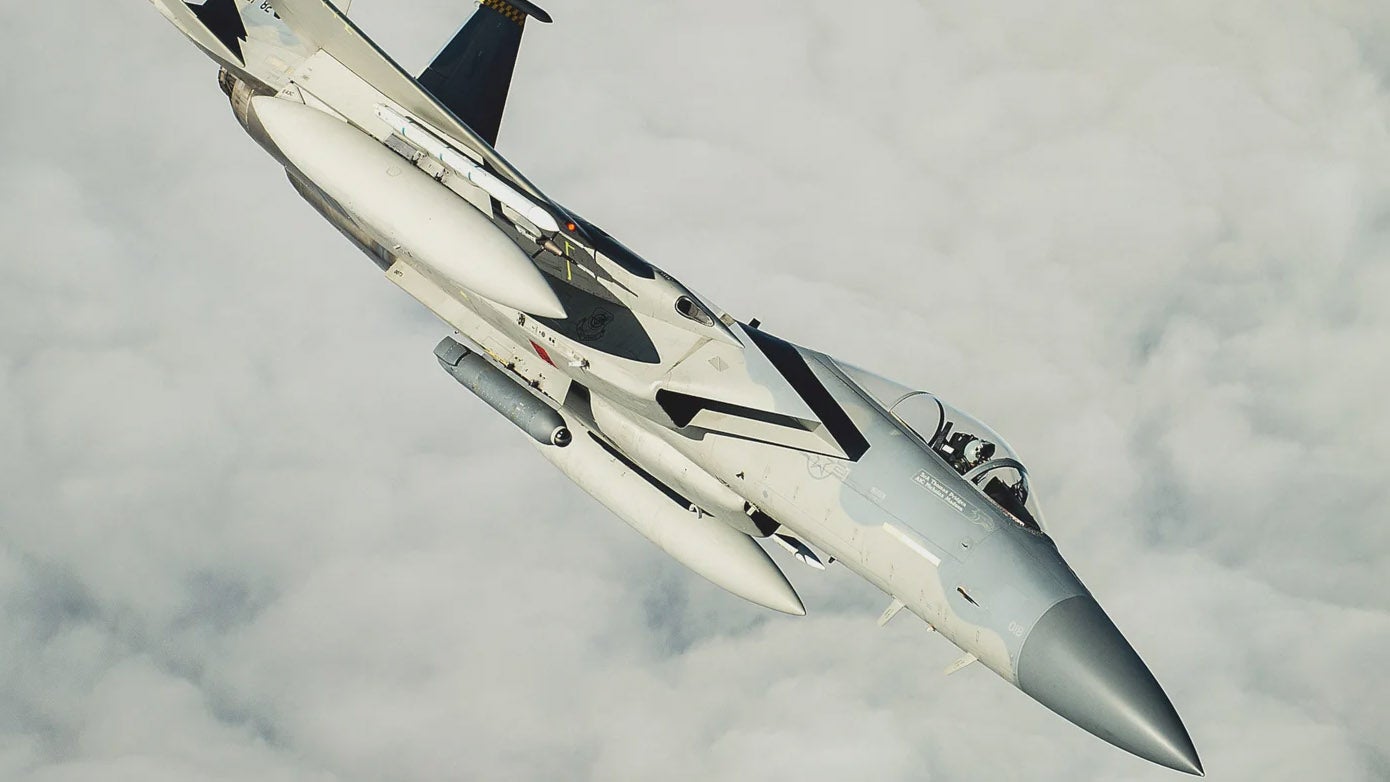
The ability to detect, track, sort, and even identify aerial targets without using radar at beyond-visual-ranges is a massive upgrade for the mighty Eagle and comes at a time when stealthy aircraft and cruise missiles are beginning to proliferate around the globe. The Air Force is already rushing to modify its high-end training to confront this reality, but the IRST, with its detection capabilities uninfluenced by low-observable (stealthy) radar-evading designs, can’t come soon enough.
The passive nature of the sensor—unlike radar, it gives off no electromagnetic radiation—also provides for a whole new set of tactics that can really challenge an enemy’s ability to detect and locate fighter aircraft leveraging the IRST, especially when paired with electronic warfare. The F-15C/D’s AN/APG-63V3 Active Electronically Scanned Array (AESA) still provides the AIM-120 mid-course updates of target telemetry garnered from the IRST and sent via the datalink from the radar itself, but apparently, that is very hard to detect.
The Air Force is already testing the Legion Pod-equipped IRST on its F-16s, which, combined with their new AESA radar, will give a major boost in air-to-air prowess to the aging fighters. F-16s have been playing with various iterations of the IRST21 sensor—the same one found in the F-15C/D’s Legion Pod—in podded form for about a decade, some of which has been done for clandestine research and development. An IRST capability also appears to be a primary sensor option for the Skyborg autonomous drone program. You can read more about this development here and here.
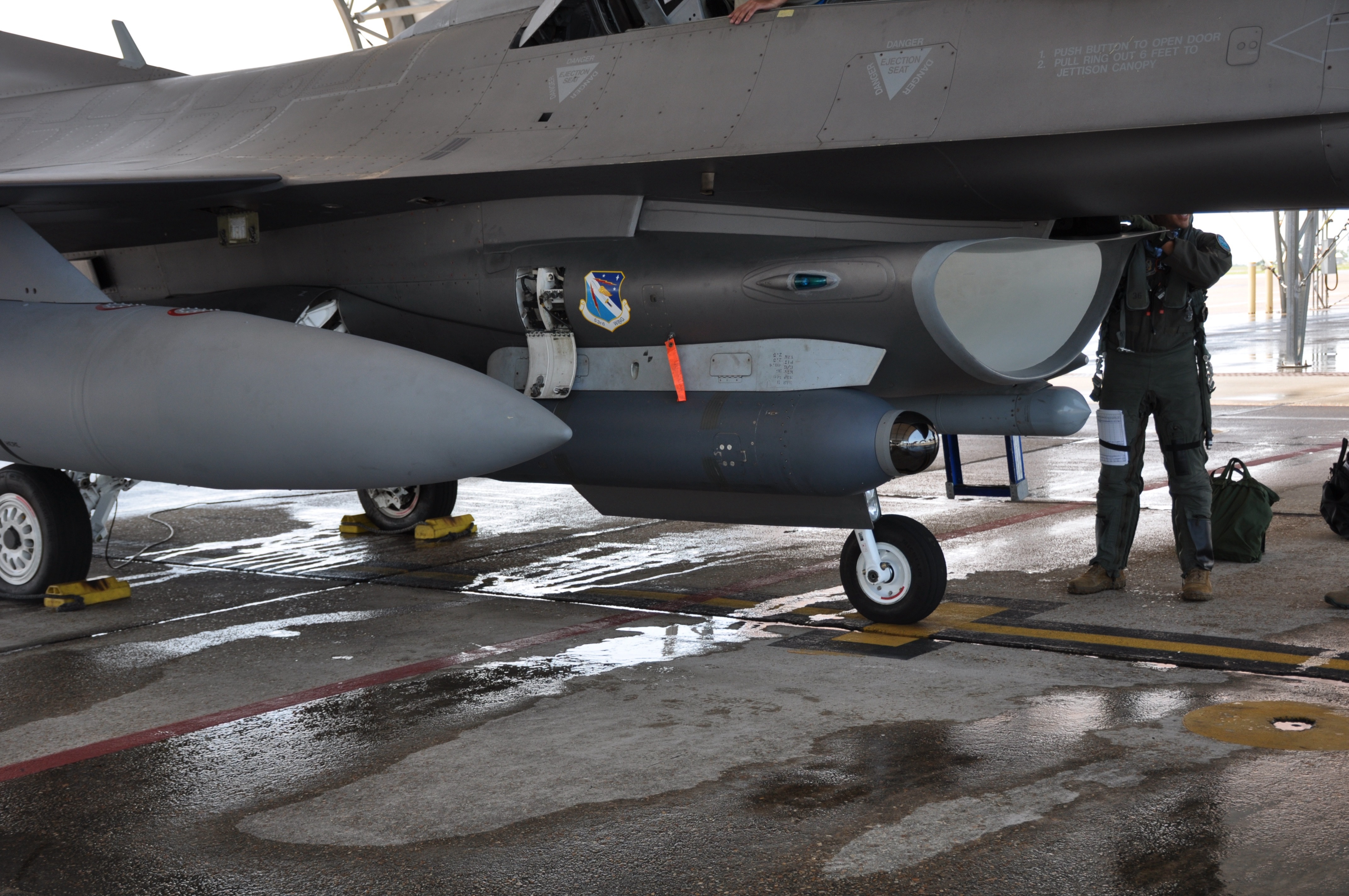
The two together, AESAs and IRSTs, really are more than the sum of their parts as each sensor can support the other. For instance, the IRST may be able to detect a low-observable target long before the radar can, but once its bearing and elevation are known, the AESA can try to detect it with a very powerful and focused radar beam. Likewise, the IRST can help maintain tracking and provide identification for the AESA radar, and so on. Other sensors can be combined synergistically similarly, like advanced Electronic Support Measures (ESM) and Sniper targeting pod. And of course, this information can be shared via datalink to other platforms. So we are talking about much more than just a new independent sensor here.
You can read in great detail just what advanced IRSTs bring to the fight and how they would be employed creatively in these past articles of ours linked here and here.
Lt. Col. Jacob Lindaman, also of the 85th TES, adds:
“This proves the capabilities of the U.S. Department of Defense and U.S. Air Force to lethally target an aircraft outside of the traditional radar electromagnetic spectrum… Pairing that with the ability to also adopt the Legion Pod on any platform sets a precedent for what’s to come.”
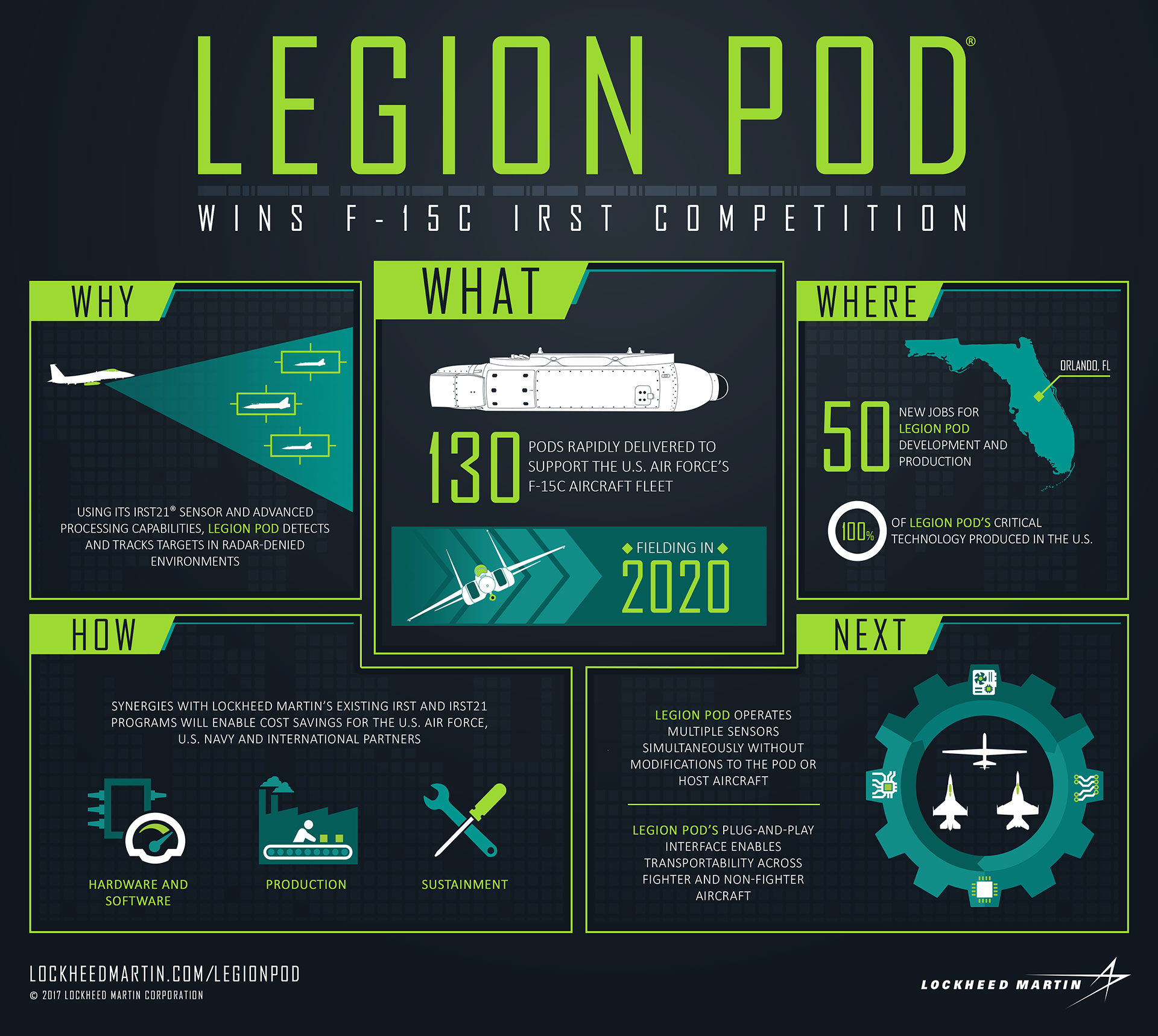
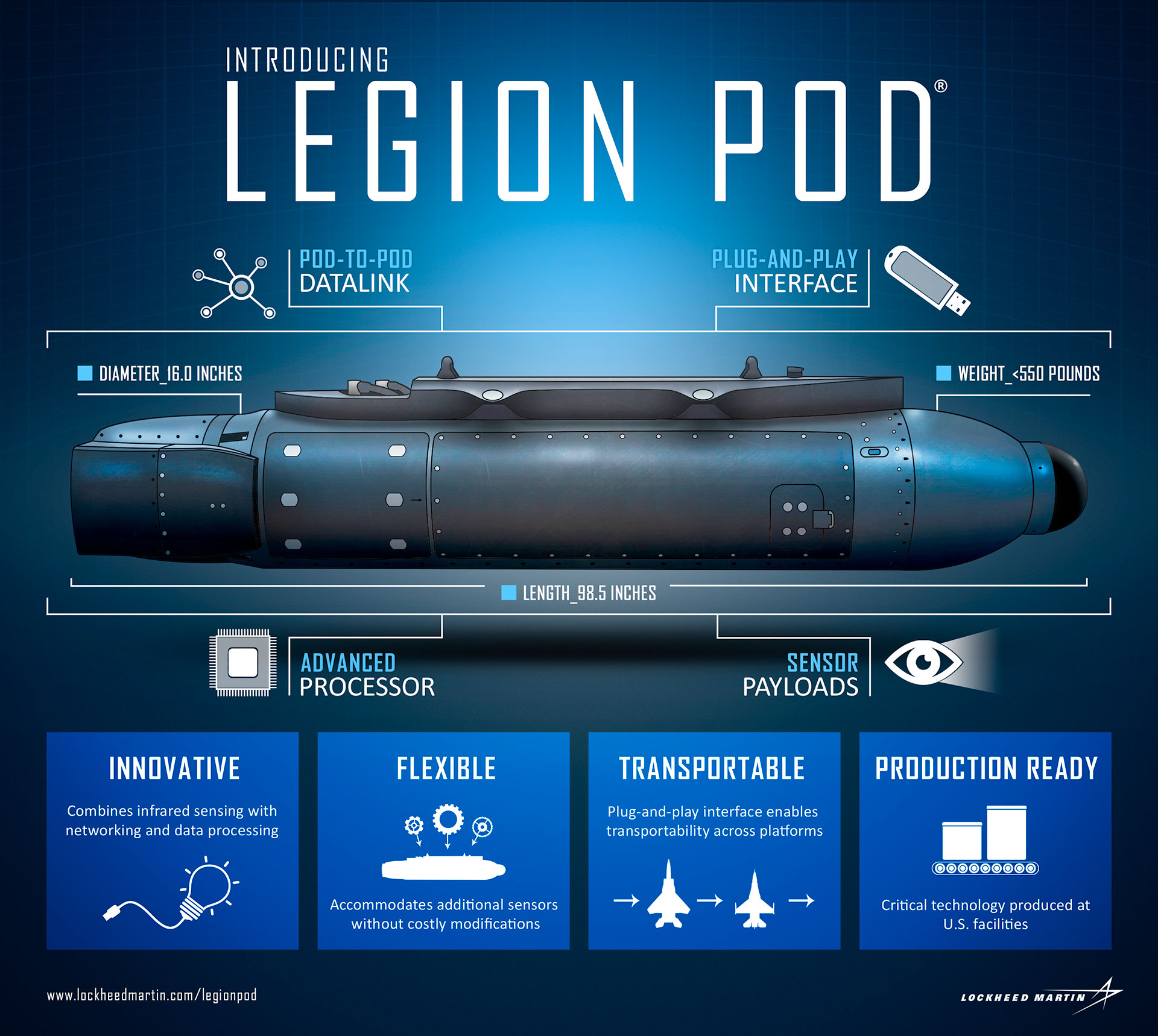
While testing of the F-15’s IRST has been ongoing for years, getting to trial actual live-fire, full kill-chain, engagements against high-performance targets shows the system is maturing into an operational capability.
The Navy is also rushing its IRST into service, which uses the same basic IRST21 sensor, but in a very different pod configuration and with a different backend. Regardless, both services should have this capability in a relatively widespread manner, fairly soon. This will complicate enemies’ ability to counter U.S. air-to-air tactics, as well as increasing overall lethality and awareness for U.S. fighter crews.
We will continue to keep you abreast as to U.S. IRST developments, but suffice it to say that this long-awaited capability is finally coming in hot.
Contact the author: Tyler@thedrive.com
